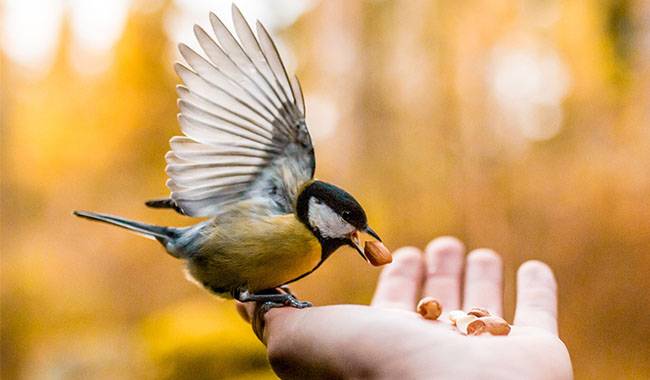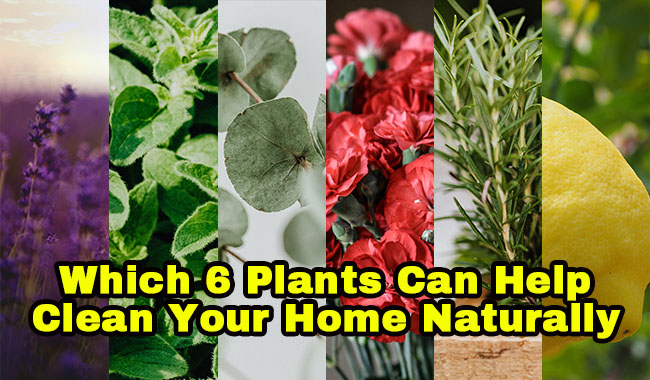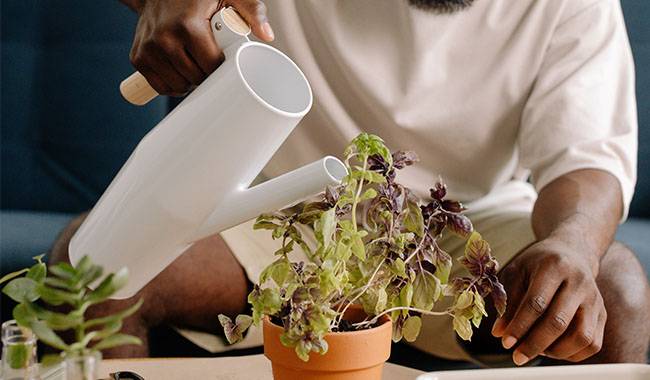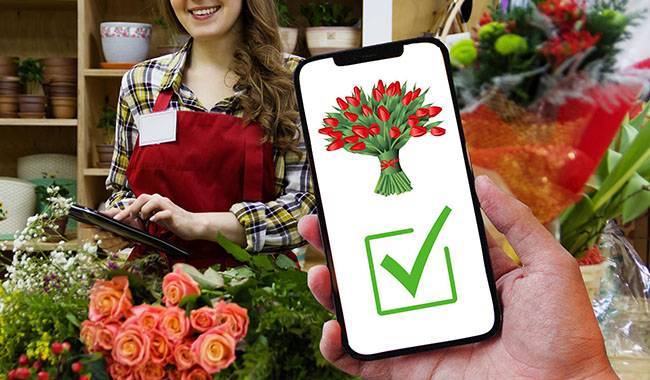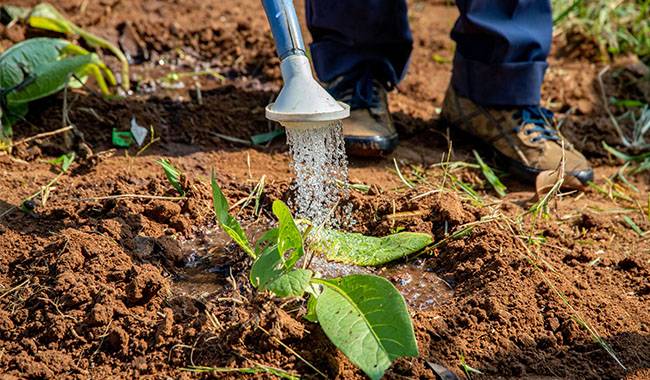
Watering is a fundamental point in the care of any seedling. Fragile, delicate seedlings and actively growing young plants are sensitive to any mistakes. Even a slight drought or overwatering can ruin weeks of work.
The watering of seedlings should follow simple rules. And the most important of them all – water alone is not enough. It must be watered correctly! And to do this, it is necessary to carefully observe the plants, study the individual characteristics of varieties and species, and observe the most accurate places.
PERSONAL APPROACH IS THE BEST STRATEGY FOR WATERING SEEDLINGS
A generous and healthy crop starts with a good watering. This is the key to the success of vegetables and flowers even after they have been transplanted into the garden. But from the seedling stage – when fragile seedlings first emerge from the soil – to planting, watering is not only important, it is vital.
Seedlings have nowhere to go for water; everything depends on watering. And the degree to which its needs are met determines whether the plant is healthy, strong, and hardy.
There is only one main recipe for watering any seedling: to meet the needs of the seedling exactly, without any slip-ups or deviations. Watering mistakes are dangerous and often disastrous during the seedling stage and the first few weeks after harvesting.
But in the rapid growth of many plants and seedlings, no mistake is overlooked for future crops or blooms.
All “pole” watering mistakes – overwatering and underwatering – are equally dangerous to seedlings. The greater risk of plant loss in the first weeks after emergence is overwatering, and after harvesting – underwatering.
But in fact, they are both the main source of all difficulties and problems. The loss of seedlings caused by improper watering is far more than the loss caused by the improper choice of maintenance conditions.
Finding a balance and an ideal irrigation schedule is not easy, but it is quite possible. And choosing the right strategy can only be achieved by experience. After all, even a difference of 33°F (1°C) or a half-hour difference in length of daylight means that plants will use the water in the soil differently.
Each seedling is individual and unique, just like the conditions of each house and window sill. So there is simply no universal recipe for watering seedlings. There is only one secret and key to success – watch the plant carefully and try to pay attention to watering both young and adult seedlings.
You need to forget about watering for all: any species or even a variety deserves individual attention, the time and frequency of watering. An individual approach, even if it complicates care, is the best strategy.
And trying to water all seedlings haphazardly at the same time is one of the main mistakes. After all, cucumbers and cabbage, for example, like plenty of water, while tomatoes, peppers, and dried flowers are afraid of it.
GENERAL RULES FOR SAFE WATERING OF SEEDLINGS
After understanding the individual preferences of plants for obtaining water, it is possible to outline general rules for watering seedlings, which are absolutely suitable for all species.
For example
- It is always better to underwater than to overwater. It is better to “over-water” seedlings, but you can avoid major problems with rotting and souring.
- To water in the morning, it is better to choose the safest time, because generally seedlings are sown in the last months of winter and early spring when the contrast between day and night is obvious. During the daytime, the water has time to spread evenly on the soil.
- Caring for and protecting plants from getting wet is a must. Not all plants are afraid of even a drop of water, but soaking the base of stems and leaves puts even the hardiest of species at risk. Water seedlings gently and slowly, not under the roots, but along the perimeter and between the rows to distribute the water evenly.
- Keeping the soil permeable is as important as water itself. Soil should not be compacted, eroded, or “crusted”. Careful loosening is advisable when the substrate shows any signs of crusting or compaction. Mulching may be done to stabilize conditions as the seedlings grow.
One of the main ways to prevent watering problems is to try to exercise restraint. Watering with too much water, requiring a longer pause between waterings to allow the soil to dry out, is not suitable for vegetable sprouts and your favorite flowers. For seedlings, it is always better to water frequently and sparsely, soaking the soil evenly and slowly and allowing it to dry equally evenly.
With careful watering, there will not be a large difference in the water content of the substrate between the bottom and middle layers of the pot or container. Of course, high watering levels will make plant care easier because the frequency of watering can be reduced, but if watered moderately, the plants will be in a more stable condition.
Proper watering of plants includes three key elements:
- Watering frequency corresponds to the rate at which the soil dries out.
- the frequency of watering in relation to the rate at which the soil dries out
- the quality of the water used.
HOW OFTEN SHOULD SEEDLINGS BE WATERED?
The frequency of watering depends on the developmental stage of the plant and the dryness of the soil. In the care of seedlings, the correct watering can only be ensured by observing the growth of the seedlings and plants.
At different stages of development, plants have different water requirements, and the risk of overwatering or rapid drying of the substrate varies.
The decision to water is most easily made in the pre-emergence stage. This is usually done by moistening the soil to maintain a steady light moisture level and spraying the soil surface slightly with a sprayer during daily aeration – removing glass or film.
If sprouts appear but the plants are not yet open and kept under glass or film, watering is reduced to 2-3 times, not daily but once every 3-4 days.
For the first 3 days after removing the film or glass, do not water and give the sprouts a little growth.
Before picking or putting out the third true leaf, water carefully, keeping the soil as lightly moist as possible, spraying carefully, and letting the top of the substrate dry out. Generally, water about once a week at this stage, and twice a week at high temperatures.
Before picking, take a 4-5 day watering break. After picking with water, the plants are not watered until they resume growth (5-7 days).
After the start of growth to the moment when the seedlings harden, the plants are watered to completely saturate the earth. It is usually only at this stage that the plants switch to classical or alternative watering, allowing the top layer of soil to dry out in the middle.
The substrate should be kept slightly moist (in individual cases, the degree of moistness is determined by variety preference). The approximate frequency is once a week for seedlings of heat-loving vegetables and drought-tolerant flowers, and once every 2-3 days for moisture-loving plants.
Do not allow the substrate to become excessively wet and waterlogged underneath, nor completely dry. Checking the degree of dryness is easy with an indicator or a simple wooden skewer.
Hardened seedlings about to be planted should be watered sparingly instead, not less frequently but less abundantly, and the substrate should be dried more often. Watering should be stopped 2 days before planting to dry the soil. Only water fully a few hours before and immediately after transplanting.
THE RIGHT WATERING FOR THE RIGHT JOB
Sprouts should not be watered with any tap water. Young plants are more sensitive to the composition, temperature, and characteristics of water than adult plants. Seedlings should only be watered.
- Rainwater (but never boiled water) that has been detained for a long time (at least 2 days), melted, and filtered.
- Soft, non-salt water – if the water is too hard, additionally acidified.
- Water at the same temperature as the room air or slightly higher – values should not be lower than 68°F (20°C), but hot water is also dangerous.
Watering sprouts in a classic way – with topwater – is just one of the options. Greatly simplifies the cultivation process, reduces the risk of errors in watering help methods of the bottom and different variants of drip and automatic irrigation, which can be used not only for indoor plants.




